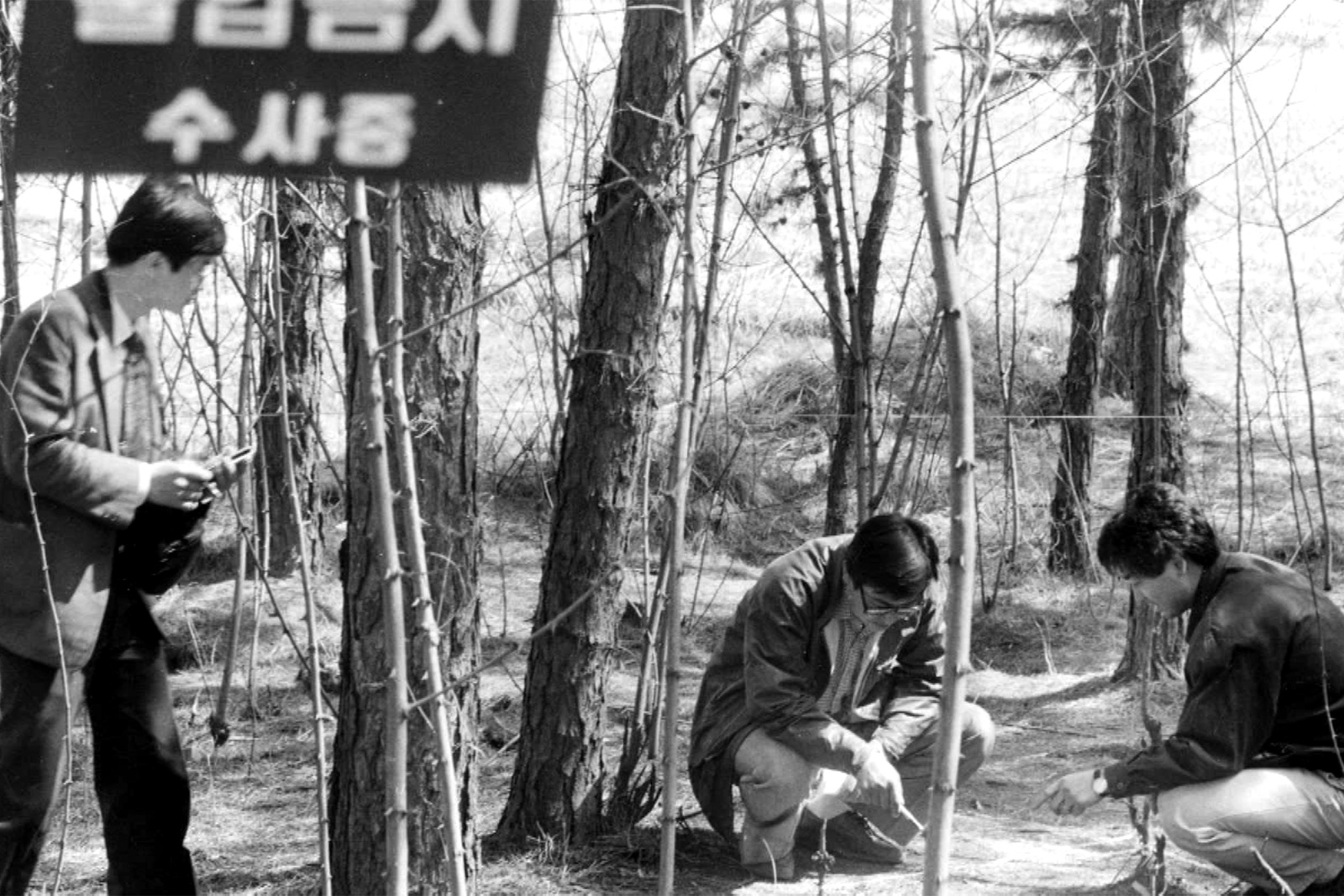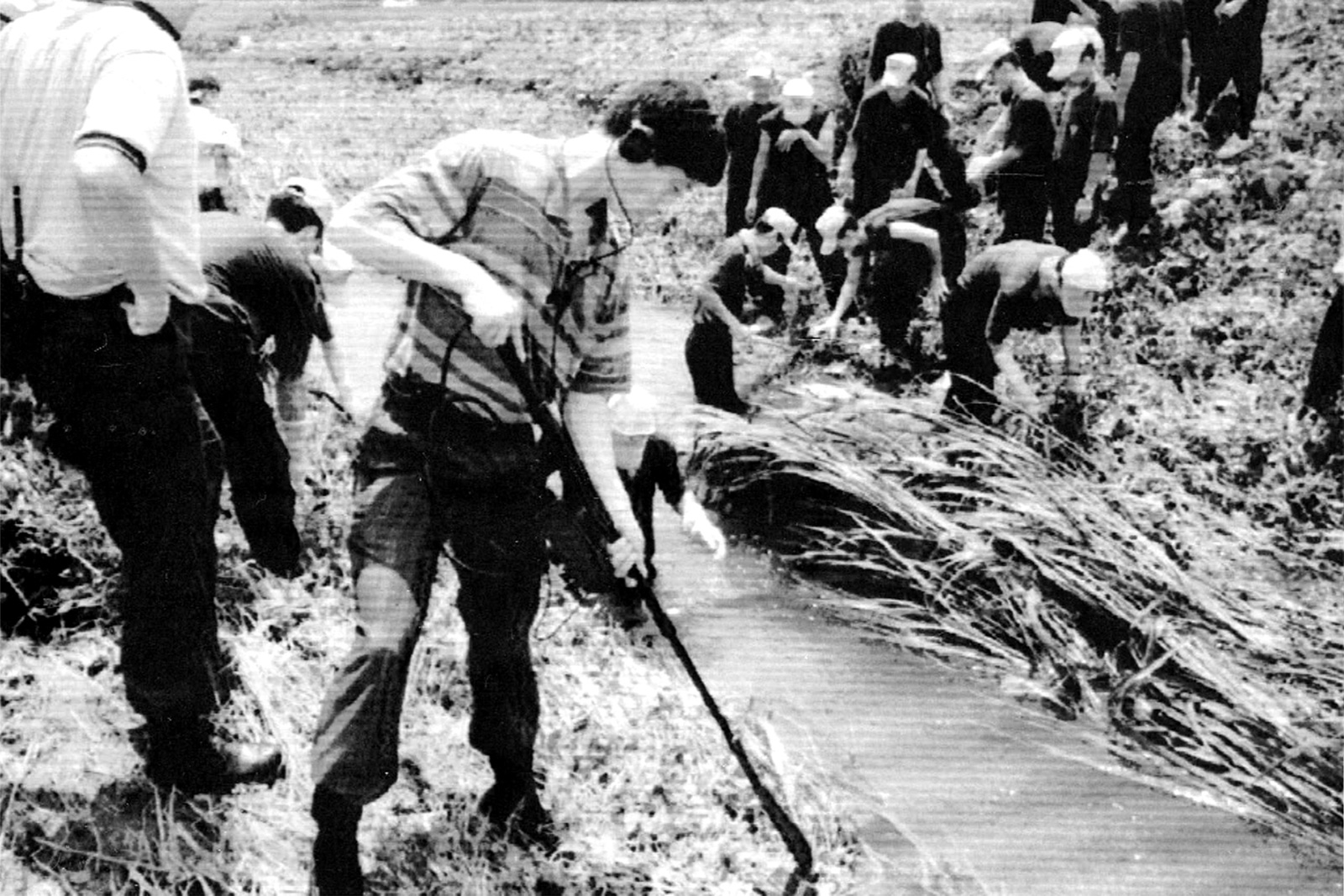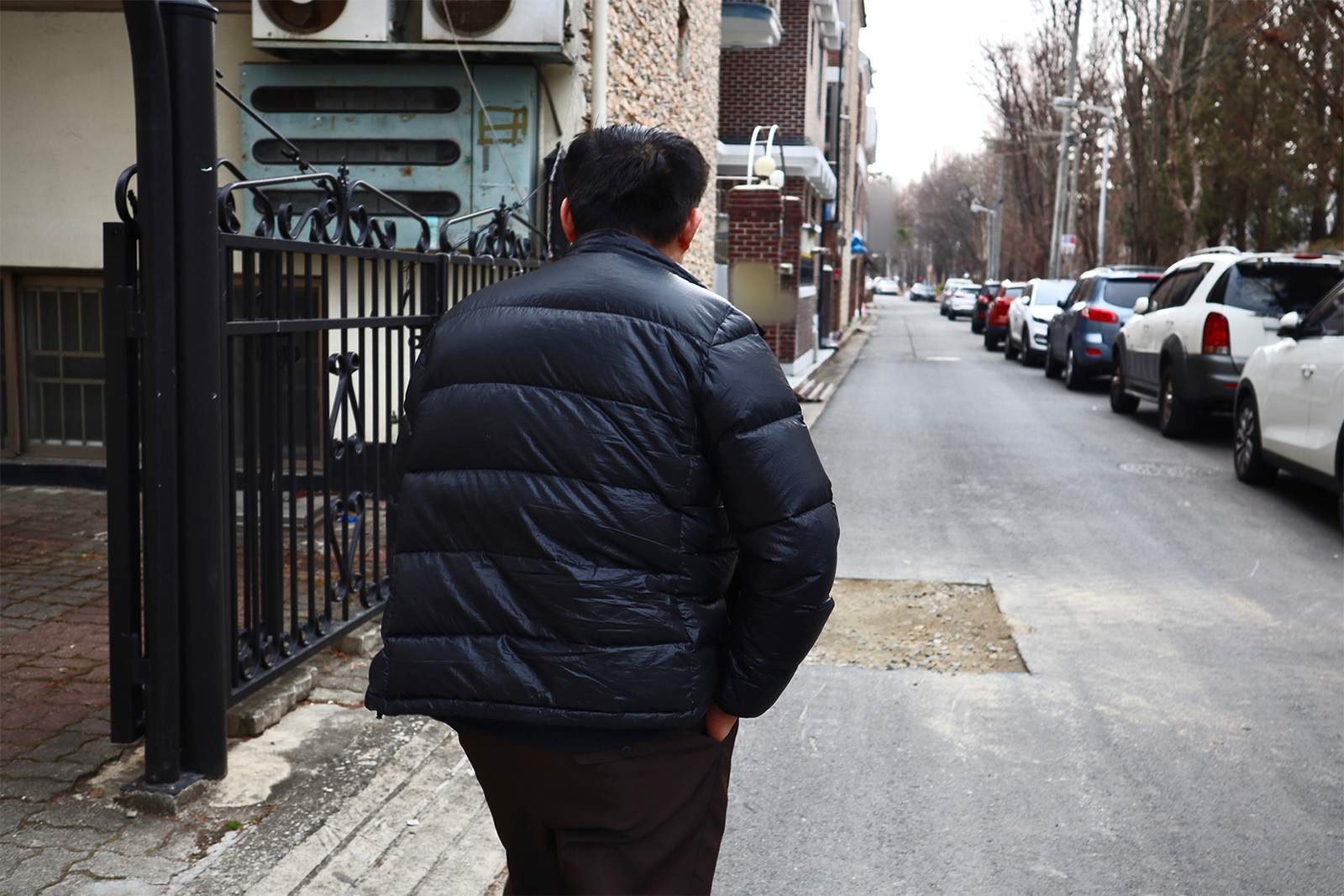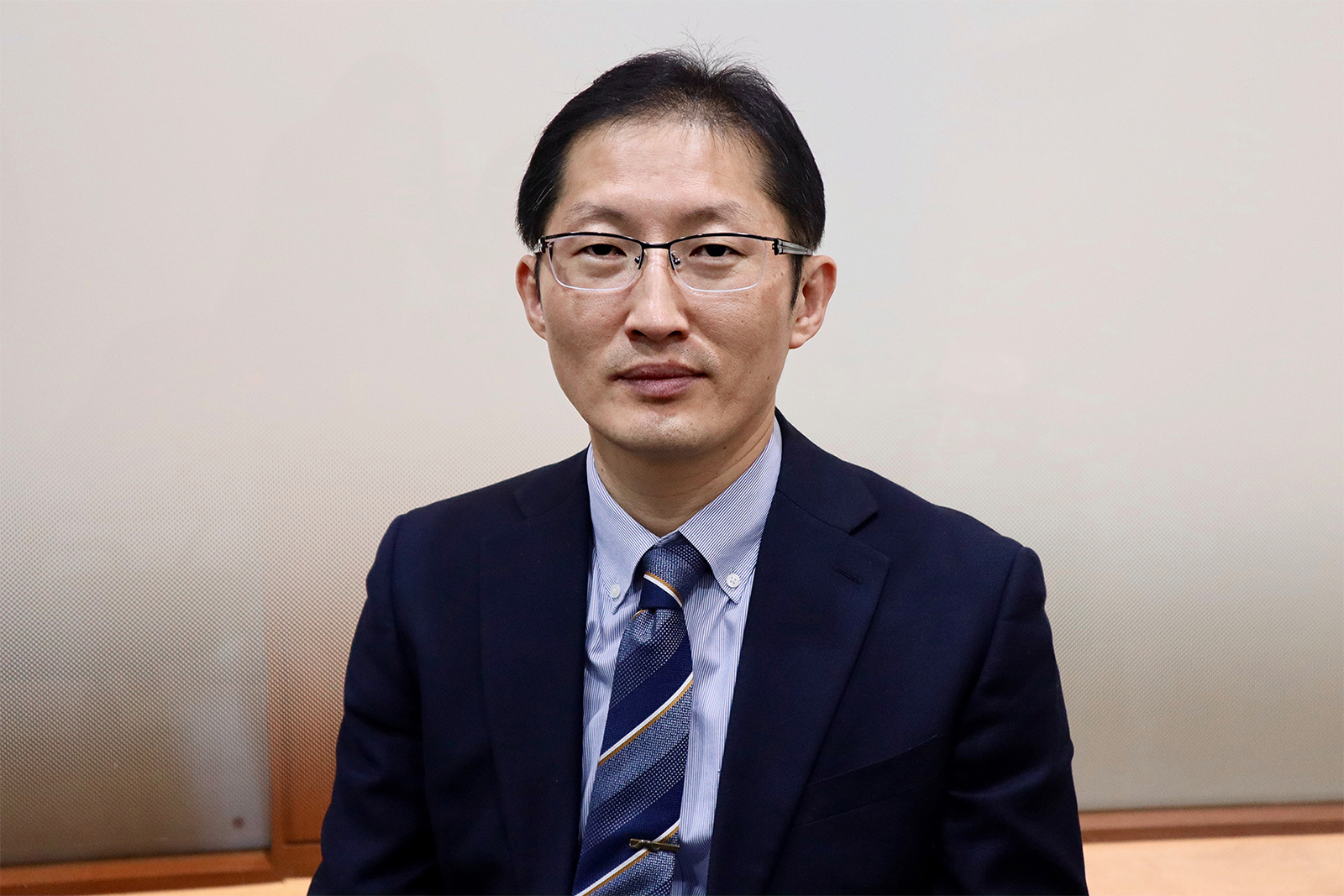The crime would have been shocking anywhere else, but in Hwaseong, then a rural area near South Korea's capital Seoul, murders like this were happening with disturbing regularity. She was the eighth female to be murdered there in two years.
Nearly a year after the teen was killed, police arrived at the house of a 22-year-old repairman, just as he was about to eat dinner.
"What's this about?" Yoon, whose full name is not being published due to a South Korean law that protects the privacy of suspects and criminals, remembers asking. "It won't take long," he says police replied.
The officers took him to a small interrogation room with a single table at the local police station where they questioned him for three days about the 13-year-old's rape and murder. Eventually, they extracted a confession.
Yoon told police that on the night of the murder, he had gone for a walk to get some air, according to records of his confession obtained from his attorney. During the walk, he had to stop several times to rest -- his childhood polio had left him with a limp so bad that he had been exempted from compulsory military service. Around midnight, Yoon saw a house with a light on and felt a sudden "urge for rape," he told police, according to transcripts of his confession. He climbed into the house and attacked the young girl, although he told police he knew the parents were asleep next door.
Afterward, he burned his clothes and went home, according to the confessions.
Little is known about the girl and her family, who have never spoken to media.
Yoon's story is somewhat clearer: He was convicted of raping and murdering the 13-year-old girl and sentenced to life in prison, though his sentence was later reduced on appeal. He was released after 20 years in prison.
The problem is, Yoon says he didn't do it.
Where everyone knows everyone
Before 1986, Hwaseong wasn't the sort of place where violent crime happened. About 226,000 people lived in the area, scattered among a number of villages between forested hills and rice paddies.
One of those villages was Taean-eup, where Yoon lived. In the 1980s, Taean-eup was a bustling community with rice-wine bars and Korean-style coffee shops where locals liked to gather and gossip. Many people worked in the nearby factories, many of which created electrical goods, such as light bulbs, remembers Hong Seong-jae, who ran the farming machine repair store where Yoon worked. Others worked as rice farmers, and even those who lived downtown kept cows for milk. Everyone in Taean-eup knew each other, Hong said. Before the murders, there was no real crime to speak of -- only the odd robbery or break-in.
"But we were all so poor, there wasn't much to be lost," Hong said.
But in 1986 that changed. In September that year, a woman was murdered, the first in a series of killings that came to be known as the Hwaseong murders. By 1991, 10 women and girls had been killed Hwaseong region, including the 13-year-old killed in her bed. In all of the cases, the victims had been sexually assaulted, and in many of the cases, an article of their clothing, such as stockings or a blouse, had been used in the killing. The victims included housewives, schoolgirls, and a department store worker, according to Ha Seung-gyun, who was involved in the investigation.
The youngest were teenagers, the oldest were 71 years old, according to police records.
No one seemed safe.
As the murders kept happening, the people of Hwaseong grew more afraid.
Residents formed squads and patrolled the streets at night, armed with sticks. Women avoided going out after dark.
"There were no street lights and it was very dark," said 55-year-old Park, who worked at a factory in Jinan-ri, another village in Hwaseong, in the 1980s. CNN agreed not to use her full name due to the sensitivity of the case. "I would take the bus and when I encountered a man, I'd be frightened. I was told not to wear red clothes and not to go out after dark." There were rumors the killer attacked women wearing in that color, Ha said. "There was a big rumor about the red clothes (attracting the killer). The third killing involved a woman, Lee, who worked at a department store in Suwon."
Hong, the Taean-eup resident, remembers that men were afraid of being questioned by police. The village became quiet and eerie, he said. "We were worried for being mistaken as criminals, so we didn't go out drinking either. Even if we hadn't done anything, things could get out of our hands."
The investigation
When the first victim was murdered, the responsibility fell to local police to investigate. But after three females were found dead within three months, they brought in investigators from a nearby city to help. "From the third killing, the police saw that it was a serious case. It had wide media coverage and local residents were frightened," said detective Ha, who was one of the leaders of the investigation, in a lengthy interview last year on the South Korean YouTube channel he created to highlight cases he worked on.
By then, police were sure that they were looking for a serial killer, but Ha said they had few clues.
It was a time before surveillance cameras or phone tracking, and before DNA evidence was widely available. Police had to rely on other, more creative measures to catch the killer.
The first five murders happened within a 6 km (3.7 mile) radius in Hwaseong so police spread out in teams of two, dotted every 100 meters (328 feet), Ha said. It didn't work: the next killing happened where there was no police presence.
Some female police officers wore red and tried to lure the killer into a trap, others went to a clairvoyant who told them to find a man with a missing finger, and some became so frustrated that they performed a shamanistic ritual on a voodoo scarecrow, Ha said.
But the killings kept happening. Police logged more than 2 million days on the case -- a record for an investigation in South Korea, according to news agency Yonhap. "The more we looked (at the victim's bodies), (the more) we couldn't hide our feeling of powerlessness, our anger at the killer," said Ha, who is now retired and in his 70s, in his YouTube video.
"After months spent on the rice paddies and fields tracking the killer, I can say that our hatred of him was beyond imagination."
Yoon was the only person ever convicted of any of the 10 murders. Police suspected he carried out a copycat killing -- all the other victims had been murdered outside, said Ha, who wasn't involved in Yoon's investigation.
The other nine murders went unsolved.
A breakthrough
For many years, it seemed that one of South Korea's most infamous serial killers would never be found. The mystery was revisited in "Memories of Murder," a 2003 film by "Parasite" director Bong Joon Ho. Then a few years later, as the statute of limitations expired for the last victim, it became clear that, even if the killer was found, there would be no trial or justice for the victims' families.
But the murders didn't leave Hwaseong's collective memory, even as the villages eventually incorporated into a small city. And the police didn't give up their search.
In September 2019, Gyeonggi Nambu Provincial Police superintendent general Ban Gi-soo, the latest police officer in charge of the investigation, made an explosive announcement. In July, police sent evidence that had been held in their files for 30 years to the National Forensic Service for DNA testing.
The DNA evidence from at least three of the murders matched one man: Lee Chun-jae. Lee is currently in prison serving a life sentence for the 1994 rape and murder of his sister-in-law, according to Daejeon court officials and South Korea's Justice Ministry. It was huge news in South Korea.
A month later, there was another development. Lee confessed to all 10 of the Hwaseong murders, and four others that police did not provide details on.
He had given a detailed confession, even drawing on a piece of paper to explain the locations of the killings, an official from Gyeonggi Nambu Provincial Police Agency said.
"It is an important case that had prompted questions all over Korea," the official said. "The victims and their families had strongly demanded (the truth)."
It was a major breakthrough in one of the country's most infamous serial killing cases. But it also left authorities in a tricky position.
If Lee murdered all 10 people -- including the 13-year-old -- then Yoon had spent 20 years in prison for a murder he didn't commit.
Lee's confession alone wasn't enough to clear Yoon's name. In the eyes of the law, he was still a convicted murderer.
Three days of no sleep
These days, Yoon is a gregarious man in his 50s. He works at a leather proces sing factory in North Chungcheong Province, a few hours' train ride from Seoul, and he still walks with a limp. On the surface, he is cheerful and sociable, a man who speaks loudly and laughs freely.
But his life has been one of hardship.
As a child, Yoon's family moved around, Yoon says. When Yoon was in his third year at school, his mother passed away in a car accident. After that, his father disappeared, and Yoon quit school to start work. Yoon came to Hwaseong, where he begged outside a fried chicken restaurant for a year, he said. When he was about 11, he began working at a farming tool center, and by 22 was training at the same center to become a qualified technician.
He was a heavy smoker, and had never been in a relationship with a woman, he told police in his confession. "I haven't even tried talking to girls because I thought no one would like a disabled person like me," he said.
His former boss, Hong, remembers him as always being a bit sad. "I think it was because he grew up without his parents," Hong said. "He wasn't very articulate and didn't express his feelings much. He was excellent at repairing machines though."
After the police took him away, Yoon remembers being kept handcuffed in the interrogation room for three days. He barely ate, and was only allowed to leave to go to the toilet. Whenever he tried to sleep, police would wake him up.
"Those times were much like a nightmare," he said. "When you don't get sleep for three days, you don't know what you said. You don't remember what you did. You can't think properly.
"You just go along with their questions, on and on."
Nowadays, Yoon thinks that he was mistreated, but at the time, Yoon didn't know anything about law -- he hadn't even finished elementary school.
Yoon ultimately signed three confessions and at trial he admitted to the murder, hoping to avoid the death penalty. He served 20 years.
"He must have felt everything was so unfair, spending years in prison," said Hong, who went out of business when Yoon went to jail as he couldn't continue his company without Yoon's skill set. "I lost my business, but he lost his life."
Last December, Gyeonggi Namu Provincial Police launched a formal probe into the conduct of seven police officers and one prosecutor who worked on the original investigation into the killings, including reviewing allegations of abuse of power during arrests. The results of the investigation haven't been released yet.
Yoon's experience wasn't totally unusual for the time. In the 1980s, it was common for suspected criminals in South Korea to be kept awake for long periods to extract a confession, according to Lee Soo-jung, a forensic psychology professor at Kyonggi University.
And it wasn't just Yoon who accused police of torture. Kim Chil-joon, an attorney who defended other suspects in the Hwaseong murder case, said many people were abused during the investigation.
One of his clients, also surnamed Kim, was accused of the fourth and fifth killings after a medium in the United States said they had seen him in their dream, he said. Kim was subject to torture and interrogation and in 1995 successfully sued the government for damages.
But Kim took his own life two years later after bouts of depression and PTSD, Kim Chil-joon said.
Last year, chief inspector Ban said police were investigating whether officers abused suspects during the original investigation, revisiting allegations that one man was waterboarded with spicy seafood soup.
But these officers will likely never be charged -- the statute of limitations has run out on those allegations, too.
"I want my honor back"
Yoon is determined to clear his name, and his retrial began this week. That in itself is a rare event in South Korea.
A tiny fraction of applications for retrials are accepted and they generally require new evidence, according to lawyer Heo Yoon, who specializes in providing retrial legal advice.
Park Joon-young, one of Yoon's attorneys, says that evidence is rarely kept for longer than 20 years except in the most high-profile cases -- like Hwaseong.
In Yoon's case, Lee Chun-jae's confession will be crucial. It's possible that the convicted murderer will testify in court before the three judges, who have the power to overturn Yoon's conviction, Park said.
There's a good chance he'll be acquitted. At a pre-retrial hearing in February, the presiding judge verbally apologized for Yoon's false conviction.
Yet, there are still issues with Yoon's case. Although Lee's DNA matches a number of the murders, police have not announced any DNA evidence connecting him with the 13-year-old girl.
Also, pubic hairs found at the scene returned a 40% match with Yoon's, according to a 1989 report written by an expert at National Forensic Service (NFS).
Those hairs have not been DNA tested -- and even if they do ultimately match Yoon's, his lawyer Park warns it's possible that a sample taken from Yoon could have been mixed up with evidence taken from the scene of the murder. The court has ordered the NFS to extract DNA from the hair, Park said.
The retrial is expected to take place over a number of months, but if Yoon is found not guilty, he can make a claim for compensation, according to Park.
Yoon says nothing can compensate him for the 20 years of life he lost. Even when he was freed from prison 10 years ago, the world had changed so much that initially he wanted to go back in. "It took me around three years to adjust," he said. "I couldn't live. My life patterns at the prison didn't accommodate the new world I was faced with."
Yoon knows Lee will never be tried for the crime, nor will the police officers who he says tortured him, because too many years have passed since the sleepless nights he spent in that small police interrogation room.
He just wants to live the rest of his life as an innocent man.
"I want to clear my false accusation, and I want my honor back," he says. "I want to be satisfied with these, and that's all."
Hilary Whiteman and Jenni Marsh edited.
Illustrations by Max Pepper. Illustrations are based on reporting, however they may not be an exact representation of events at the time. Graphics and layout by Jason Kwok and Natalie Leung.
Sophie Jeong and Paula Hancocks also contributed reporting from Seoul.
"crime" - Google News
May 24, 2020 at 10:34AM
https://ift.tt/3d08r8G
He spent 20 years in prison for murder. Then someone else confessed to the same crime - CNN
"crime" - Google News
https://ift.tt/37MG37k
https://ift.tt/2VTi5Ee
Bagikan Berita Ini























0 Response to "He spent 20 years in prison for murder. Then someone else confessed to the same crime - CNN"
Post a Comment